Should We Play With Our Food??
Who among us hasn't experienced this at some point in our childhood: being scolded for playing with our food! As luck would have it, new thinking vindicates us all! It's now believed that "playing" with our food is actually a good thing -- who knew!!!
We came across this article "Why You Should Let Your Kids Play With Their Food" on mindbodygreen and just had to share. It was originally adapted from Home for Dinner: Mixing Food, Fun and Conversation for a Happier Family and Healthier Kids by Anne K. Fishel, Ph.D. (AMACOM © 2015).
1. Making food awakens the senses.
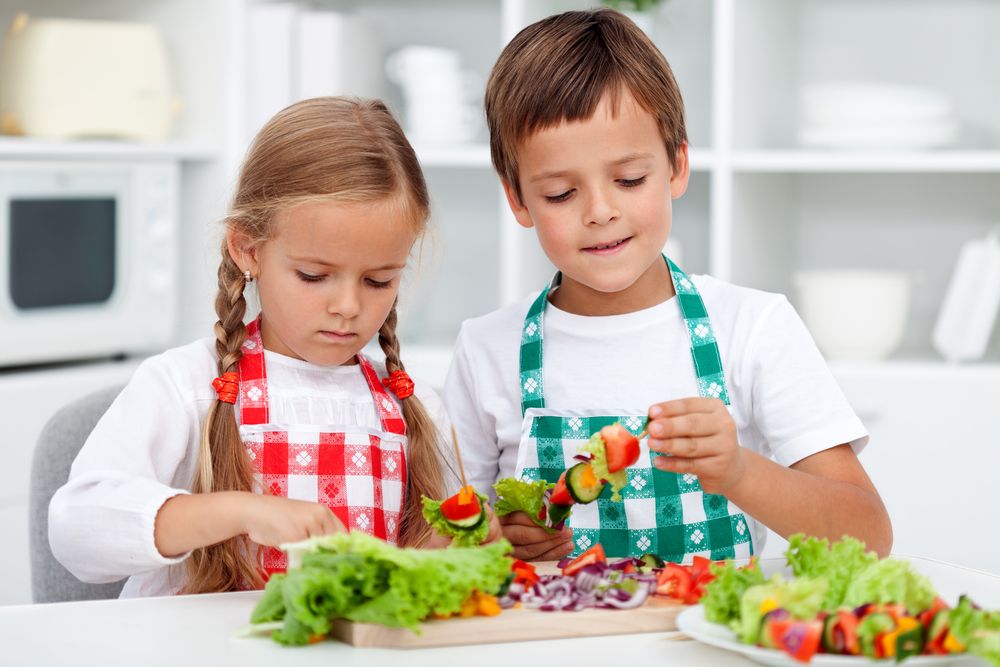 In a world that is increasingly virtual, making food is one of the few opportunities to use touch, smell, sight and taste all at once. Sure, if we still built tables, stitched quilts and hauled water, perhaps cooking wouldn't be so special. But cooking remains that rare activity that still involves all our senses — and it's an activity that families can do all together.
In a world that is increasingly virtual, making food is one of the few opportunities to use touch, smell, sight and taste all at once. Sure, if we still built tables, stitched quilts and hauled water, perhaps cooking wouldn't be so special. But cooking remains that rare activity that still involves all our senses — and it's an activity that families can do all together.
- Play with shape: Get a package of wonton wrappers and make a filling with minced vegetables and meat. You can create triangles, hats, and other shapes as you seal up the wrappers to create dumplings!
- Play with smell: Have your kids cover their eyes, and ask them to guess what they are smelling — a sprig of mint, a sniff of cinnamon, a whiff of banana peel. The pleasures of taste rely on the aroma of food, so exposing your kids to more smells may make them more adventurous eaters.
- Play with taste: Slip in an offbeat spice or flavor element to a dish — a splash of lemon juice, a squirt of fish sauce, a bit of minced ginger. You can enhance the flavor while staying under the radar of taste detection. Don't be surprised if the children at the table are better at this game than the adults, since we lose half of our taste buds by age twenty.
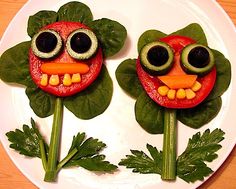 2. Kids who have fun with cooking will be more likely to eat their creations.
2. Kids who have fun with cooking will be more likely to eat their creations.
A healthy salad with greens and vegetables may languish on the table. But, if you lay out all the salad ingredients and ask each person to create a collage — a face, a car, a flower — kids will dive right in. The only rule is that each person must eat his or her own creation.
3. Food's colors and textures create opportunities for artistic expression.
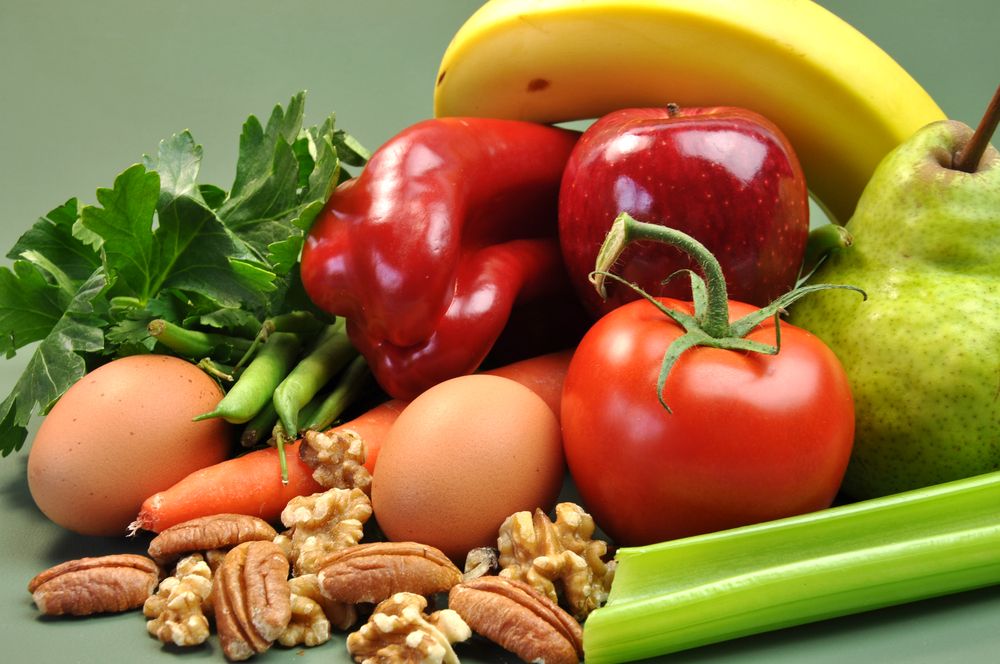
Food, in its rainbow of colors and its range of textures from slippery to squishy, is a medium like paint or clay. Concoct a meal with every color in the rainbow, or one that is monochromatic. Make a simple pretzel dough, and have everyone get their hands goopy and sticky making shapes and letters. As Marcella Hazan stated, "Cooking is an art but you can eat it too."
4. Playing with food engages the scientist as well as the artist.
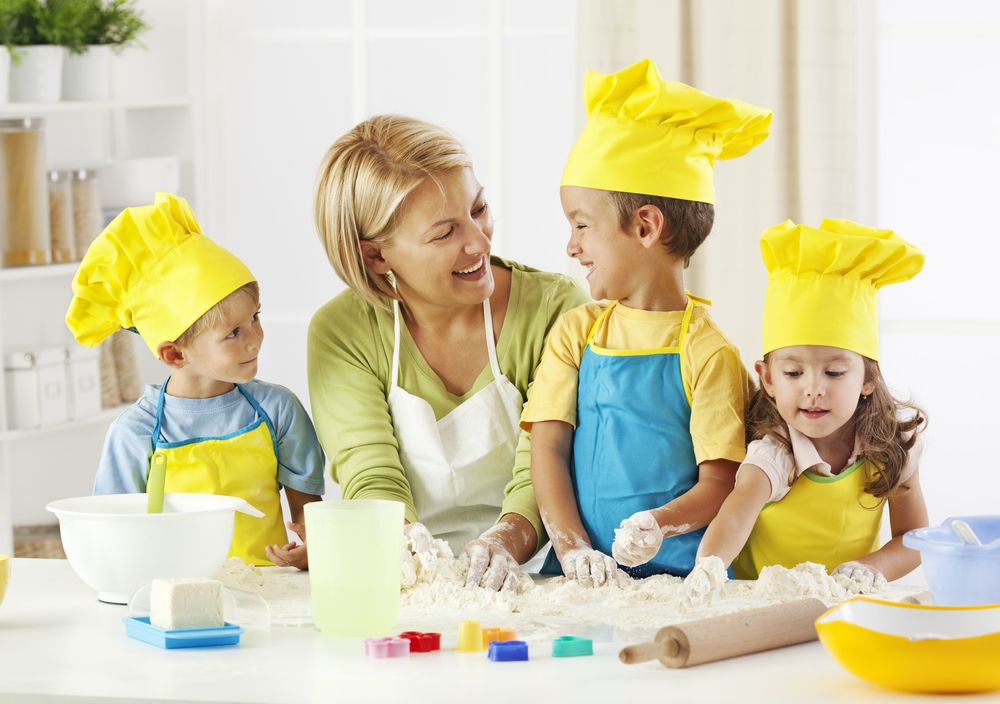
The chemical properties of cooking permit experimentation and dramatic transformations. Add air to eggs, and you're on your way to making meringues. Add spices, sugar, salt and vinegar to anything — avocados, cucumbers, onions — and you're pickling, where microbes eat sugar to produce lactic acid.
The budding scientist may want to experiment with length of time, proportions, and other vegetables — after all, trial and error, observation and testing are the heart of the scientific process.
NAEYC Week of the Child Taco Cookbook
5. Playing can extend the time at the table.
- Play with space: At most family dinners, each family member sits in the same chair night after night. So what happens if everyone chooses a different seat, or sits closer or with more distance? What about eating dinner in a different room, or on the floor? Changes in context can alter the mood of the dinner.
- Play with music: Given that most teenagers will listen to about 6,000 hours of music between the ages of 12 and 18, there's a lot of their inner lives that get tangled up in all that music. If a teen is willing to play his favorite music and tell you why he likes it, you get a window into his life. The same goes for a parent who plays her favorite tunes, particularly those she loved when she was her teenager's age. Even easier is for each family member to hum a few bars of a song or an ad. Whoever guesses the tune first gets to hum the next few bars.
- Play games: Have each person tell "two truths and a lie" about something that happened today. Whoever guesses the made-up story first, takes the next turn. Or, have one family member think of a family memory while everyone else asks yes or no questions to figure it out. Was it during a holiday? Was anyone laughing? Did anyone get angry?
6. Dinner is like improvisatory theater.
Your family shows up night after night, and you can try out new ways of interacting with one another. When parents or kids complain that there are too many critical comments made at the table, the family can practice saying positive things. The first person to slip up has to wash the dishes.
Food can be a medium of play for children as well as adults. The dinner table can also be a chance to experiment with our roles and to play games.
Be sure to check out our class on General Nutrition!
So this Mother's Day, give your mom a big hug, bring her into the kitchen to show off your culinary skills and then...anything goes! :)
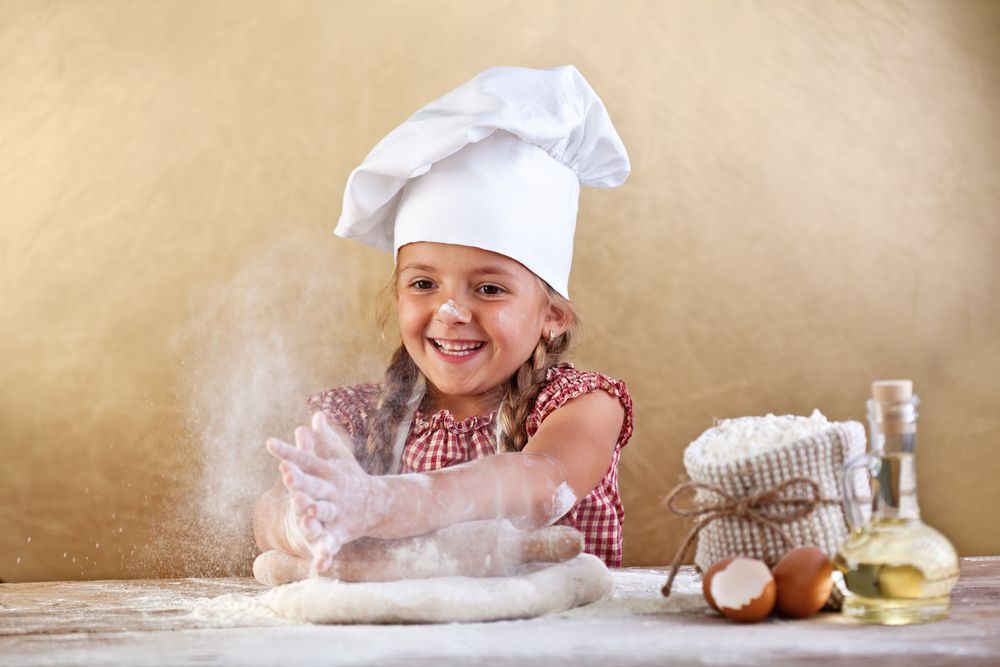
"Be the reason someone smiles today."